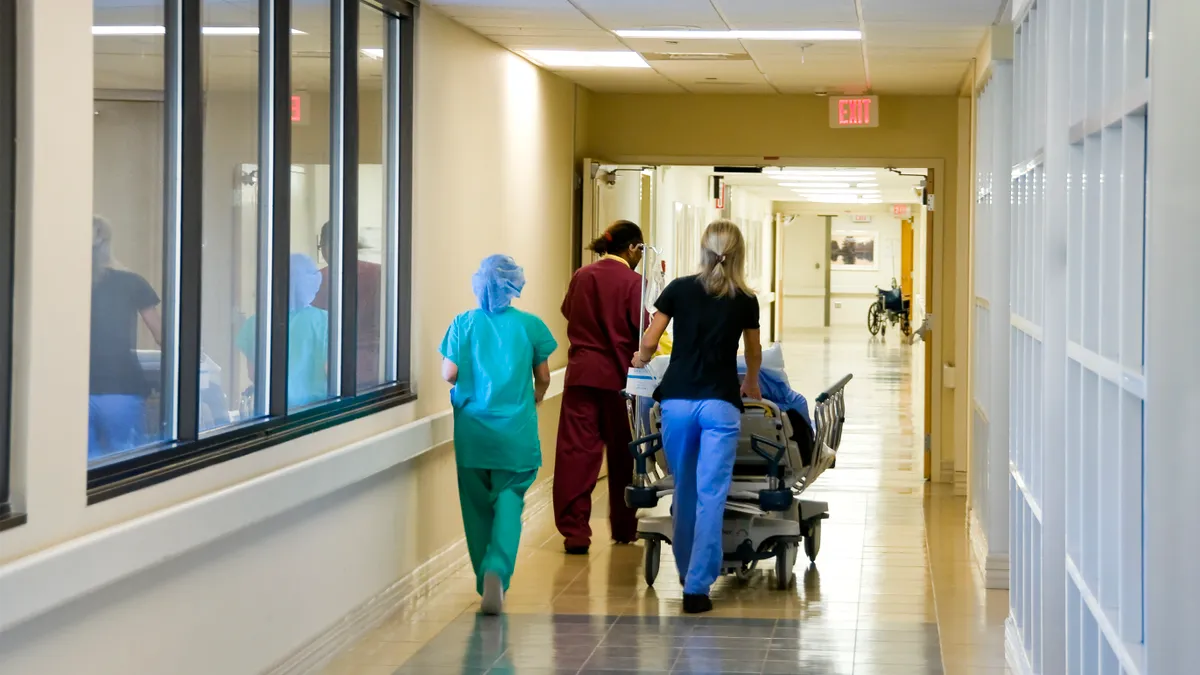Dive Brief:
- As hospitals see more patients return for non-urgent visits, an international panel of the American Association of Hip and Knee Surgeons has published a list of recommendations to minimize the risk of pathogen transfer when reintroducing elective orthopaedic procedures during the COVID-19 pandemic.
- The guidelines, published last week in the Journal of Bone & Joint Surgery, address pre-admission, operating room protocols and postoperative care, and were approved by a committee of 77 physicians and scientists whose expertise spans orthopaedic surgery, infectious disease, microbiology, virology and anesthesia.
- In a sobering introduction to the report, whose lead author is Javad Parvizi of the Rothman Institute in Philadelphia, the group notes its work is aimed at preventing further spread of COVID-19 during "the long road back to normalcy," while acknowledging the recommendations "are based on the available scientific evidence, albeit scant."
Dive Insight:
Four months into the pandemic, the guidelines come at a complex juncture in the trajectory of the crisis, as some hospitals around the country report a rebound in non-emergency patient visits. Some others, in states like Texas, Florida and South Carolina, for example, are once again halting elective procedures to make room for COVID-19 patients amid a surge in new cases.
The recommendations are meant to be flexible based on hospitals' unique circumstances for virus prevalence, staffing capabilities, personal protection equipment supply and other considerations.
The hip and knee group advises altering a number of practices and protocols to limit risk, starting with screening all prospective patients for SARS-CoV-2 by requiring a thorough medical history, physical exam and reverse transcription-polymerase chain reaction (RT-PCR) test where possible. Further, patients with substantial comorbidities and risk factors should be scheduled after healthier patients have been treated and experience gained with new screening, prevention and treatment protocols.
All patients entering a hospital for elective surgery should wear a mask, patients and providers should use a surgical mask during encounters, and providers should use protective eyewear. Patients should avoid use of common spaces such as check-in desks and waiting rooms, the guidelines recommend.
Strategies for the operating room assume surgeons will be performing procedures on patients who do not have SARS-CoV-2. However, due to challenges in accurately diagnosing infection, including the potential for a high rate of false negative results in RT-PCR testing, the resource includes precautions to minimize the chance of virus transmission from infected patients.
Standard surgical helmets are not recommended as protection against COVID-19 because they can harbor viruses and cannot be sterilized between procedures. Surgical teams are encouraged to wear N95 masks, filtering face pieces and a face shield with neck cover that extends inside the gown.
The guidelines suggest considering regional anesthesia to avoid aerosolization and possible increased risk of virus transmission from intubation during general anesthesia. Operating room ventilation systems should have a minimum of 20 air changes per hour and filters that can remove aerosol and droplets. Systems that decrease flow of contaminated air to hallways can be considered.
Each operating room should be thoroughly cleaned at the end of each case, and the surgical team should change scrubs frequently during the day. Respirators can be used for six to eight hours, and a new respirator is required each day.
Use of absorbable sutures, skin glue and occlusive dressings are recommended to reduce the need for patients to return to the office in the early postoperative period. Postoperative recommendations include minimizing the length of hospital stays, with follow-up visits conducted via telemedicine when possible.










